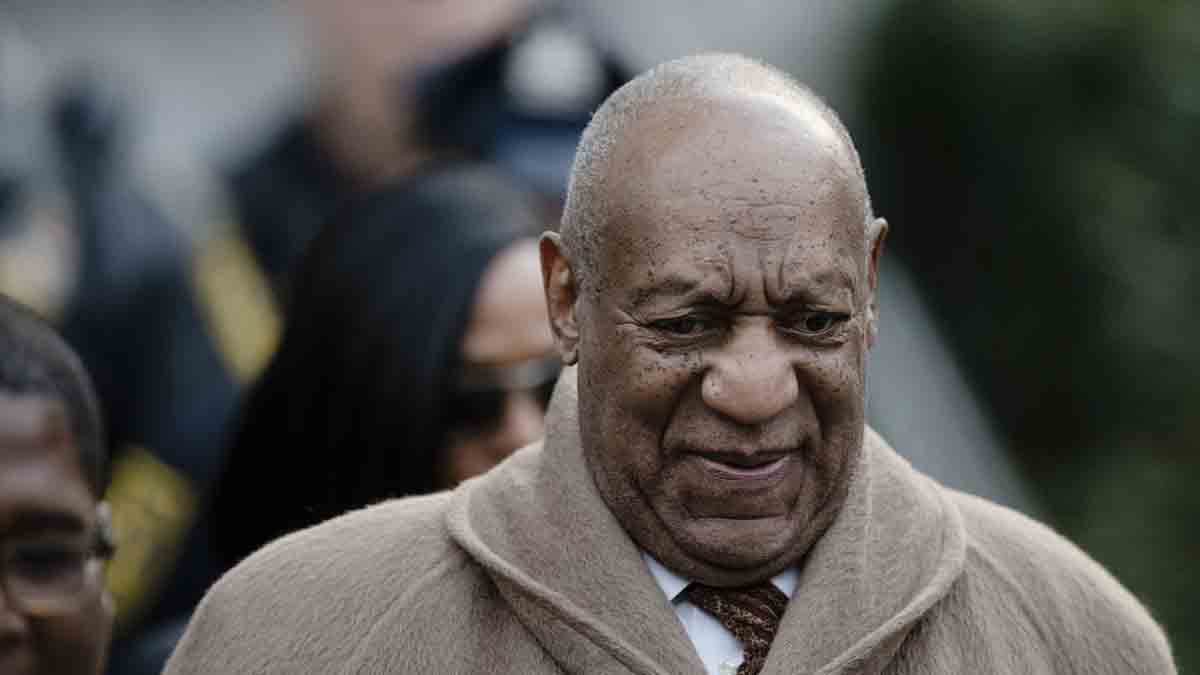Bill Cosby was not lynched
Removed from its historical context, 'lynching' it can be applied to anything

A Dec. 13, 2016 photo shows Bill Cosby leaving the Montgomery County Courthouse in Norristown. (AP Photo/Matt Rourke)
Across our history, African-American men were lynched after being accused of sexually assaulting white women. Bill Cosby is an African-American man, and most of the women he is accused of sexually assaulting were white.
Ergo, Bill Cosby was lynched.
That’s the twisted logic behind the latest defense of Cosby, who has been convicted of drugging and molesting a woman 14 years ago. His trial also featured testimony from five other women who claimed he also had assaulted them.
And that made it into a “public lynching,” Cosby spokesman Andrew Wyatt told a TV interviewer. And in a statement, Camille Cosby compared her husband to Emmett Till, the 14-year-old African American who was killed in Mississippi in 1955 after allegedly making crude comments to a white woman.
Please. By claiming that Cosby was lynched, at least metaphorically, his apologists do a grave injustice to the 4,100 African-Americans who were actually lynched between 1877 and 1950. For black Americans, lynching wasn’t a metaphor; it was fact of life — and of death.
Consider the fate of Henry Smith, a black man accused of raping and murdering a young white girl in Paris, Texas, in 1893. Smith was tied to a stake atop a 10-foot platform that was erected outside of town. A crowd of 10,000 people gathered there, with the help of special trains that were commissioned to transport spectators to the scene.
The father of the murdered girl scaled the platform to take his revenge. Using irons that had been heated white in a furnace, he thrust them under Smith’s feet. Then he moved upwards to the rest of Smith’s body.
“By turns Smith screamed, prayed, begged, and cursed his torturer,” one account reported. “When his face was reached, his tongue was silenced by fire, and henceforth he only moaned . . . Then his eyes were put out, and not a finger’s breadth of his body being unscathed, his executioners gave way.”
Then the platform was soaked with oil and lit on fire, which finally extinguished Henry Smith. But the event was memorialized in photographs and also in a Graphophone record, which preserved Smith’s cries. The next day, people raked the ashes and took his bones and teeth for relics.
That’s what a real lynching was like. And I challenge anyone to say that Bill Cosby experienced anything like it. Disagree with the verdict against Cosby. But calling it a lynching erodes the meaning of the term. And it trivializes one of the most horrific chapters in our national history.
Clarence Thomas did the same thing during his 1989 Supreme Court confirmation hearing, of course, which he infamously likened to a “high-tech lynching.”
Charged with sexual harassment by Anita Hill, Thomas said he was being singled out because he was an independently minded black man.
“It is a message that unless you kowtow to an old order, this is what will happen to you,” Thomas thundered. “You will be lynched, destroyed, caricatured by a committee of the U.S. Senate rather than hung from a tree.”
Since then, most historians who have examined the hearing have confirmed Hill’s version of events; they have also been harshly critical of the Senate Judiciary Committee, which didn’t give her charges the credence they deserved.
But it’s absurd — and offensive — to call the hearing a lynching. Thomas was questioned by a congressional committee; he wasn’t hung from a tree. There’s a huge difference.
If lynching is lifted from its historical context, it can be applied to anything. After Freddy Gray died in police custody in Baltimore in 2015, the city’s police union president called protesters a “lynch mob.” So did GOP presidential aspirant Mike Huckabee and Fox News host Laura Ingraham. Again, people can disagree about Gray’s death and the demonstrators it galvanized. But anyone who likens them a lynch mob needs to learn a lot more about lynching.
Thankfully, we now have an institution devoted to teaching all of us about it: the new National Memorial for Peace and Justice in Montgomery, Alabama, which opened just two days after the Bill Cosby verdict. It tells the real story of lynching, via 800 suspended columns — one for each county where a documented lynching took place.
Each column is engraved with the names of victims — including Henry Smith — whose deaths are mocked every time we play fast and loose with the language of lynching.
Shame on us, if we forget them.
—
Jonathan Zimmerman teaches education and history at the University of Pennsylvania. He is the author (with Emily Robertson) of “The Case for Contention: Teaching Controversial Issues in American Schools” (University of Chicago Press)
WHYY is your source for fact-based, in-depth journalism and information. As a nonprofit organization, we rely on financial support from readers like you. Please give today.




